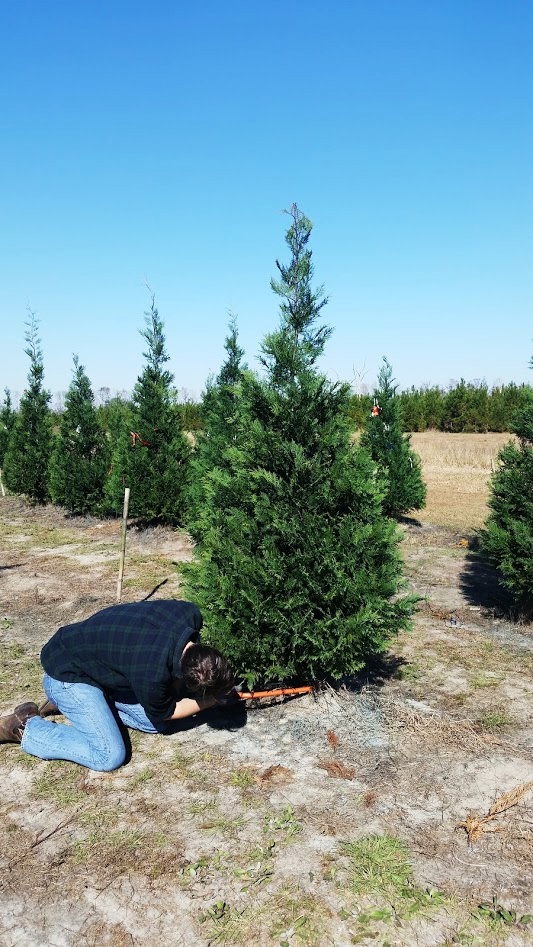
If you choose to cut your own tree at a farm, don’t forget to dress appropriately for the occasion. Blue jeans, closed-toe shoes, and a long-sleeved shirt are all good choices, as Christmas tree shopping at a farm can be a more involved process than you may think! Gloves and long-sleeved shirts are especially helpful in protecting your hands and arms from prickly foliage and sap.
A symbol of life amidst the dark, cold winter, this time of year millions of families will be decorating their homes with evergreen trees to celebrate the holiday season. The history of the Christmas tree is fascinating, with Germany being credited for starting the tradition in the 16th century. Despite their rise of popularity in Europe, the tradition did not become customary in the United States until the latter half of the 19th century.
Of course, these trees were originally harvested from forests. It wasn’t until the mid-20th century when Christmas tree farms began to establish. While some families still harvest their own tree, nowadays the majority of Christmas trees are grown on farms. Having said that, over time the Christmas tree market has evolved to include more choices, including artificial, pre-cut trees, and those that can be obtained from local pick-your-own farms.
When it comes to cut tree options there are a number of different tree species from which you may choose, with the best-selling species being Fraser fir, Noble fir and Douglas fir. Balsam fir and Scotch pine are also popular choices. Fraser fir is the most common Christmas tree species in our region, as well as throughout the United States. In fact, Fraser firs account for approximately 98% of the trees produced in North Carolina, which is second leading producer of Christmas trees and the leading producer of Fraser fir in the U.S.
Other types of Christmas trees produced in eastern North Carolina and surrounding areas includes the Carolina Sapphire, Eastern red cedar, Green Giant Arborvitae, Leyland cypress, Virginia pine, and white pine.
Thinking about getting a cut tree this year? There are several considerations you need to make prior to bringing one home. First, have a good idea where you are going to place the tree. Trees tend to look smaller when they’re outside. That coupled with the excitement of the moment may lead to a purchase of a larger tree than what you need. Trust me, it’s easier to do than you think, so when you’re shopping try to remember that the tree needs to fit in the intended space.
Second, keep in mind that most tree toppers and stands can easily add over 6 inches to a tree, so that extra height needs to be included when you’re shopping for your tree. Also, look for a full canopy without empty pockets of branches. Often a tree will be placed in a corner or against a wall providing an opportunity to hide any empty canopy pockets.
Thirdly, once you’ve made your selection and you’re bringing your tree home, it’s important to understand that a tree that has been cut down is still alive. All of the normal physiological processes of that tree are still happening, which means it’s going to need water! Keeping the tree hydrated is crucial to keeping it fresh looking through Christmas. So, when you get home, make a new cut about one-half inch above the original cut. This will expose fresh tissue allowing better absorption of water from the tree stand.
Another tip for live tree users would be to place the tree in the shade until you are ready to bring it in the house. Give the tree several good shakes to dislodge dried up needles, insects and dust. Once the tree is inside the home, check the water level in the tree stand often and try to keep it topped off to full. It will surprise you how fast the tree uses water.
To prevent an accident, place your tree away from space heaters, fireplaces and wood stoves. Electric lights and extension cords should be thoroughly checked for safety and defects prior to use. Frayed wires, broken sockets or loose connections can all be a fire hazard. Do not leave tree lights on while the tree is unattended. If you have small children or indoor pets, keep them in mind when trimming the tree.
With a little planning and preparation, live Christmas trees can add a festive feel to your home during the holiday season. Looking for advice on where to find a tree or more tips for Christmas tree care? Give your county Extension office a call.